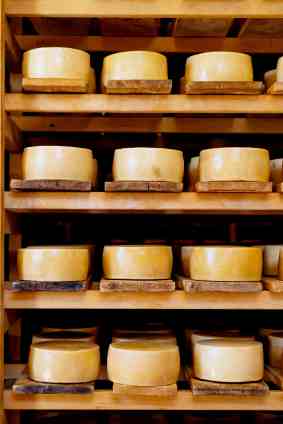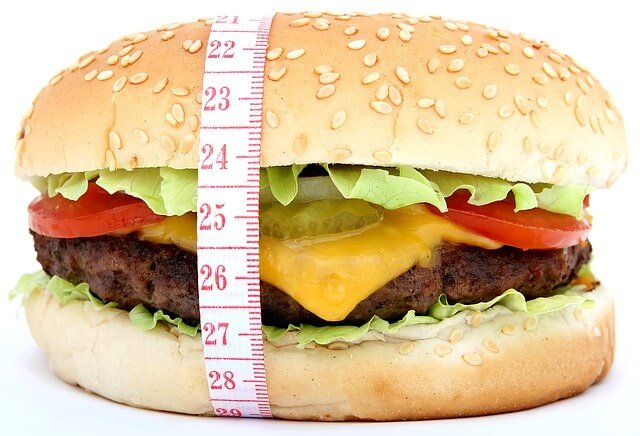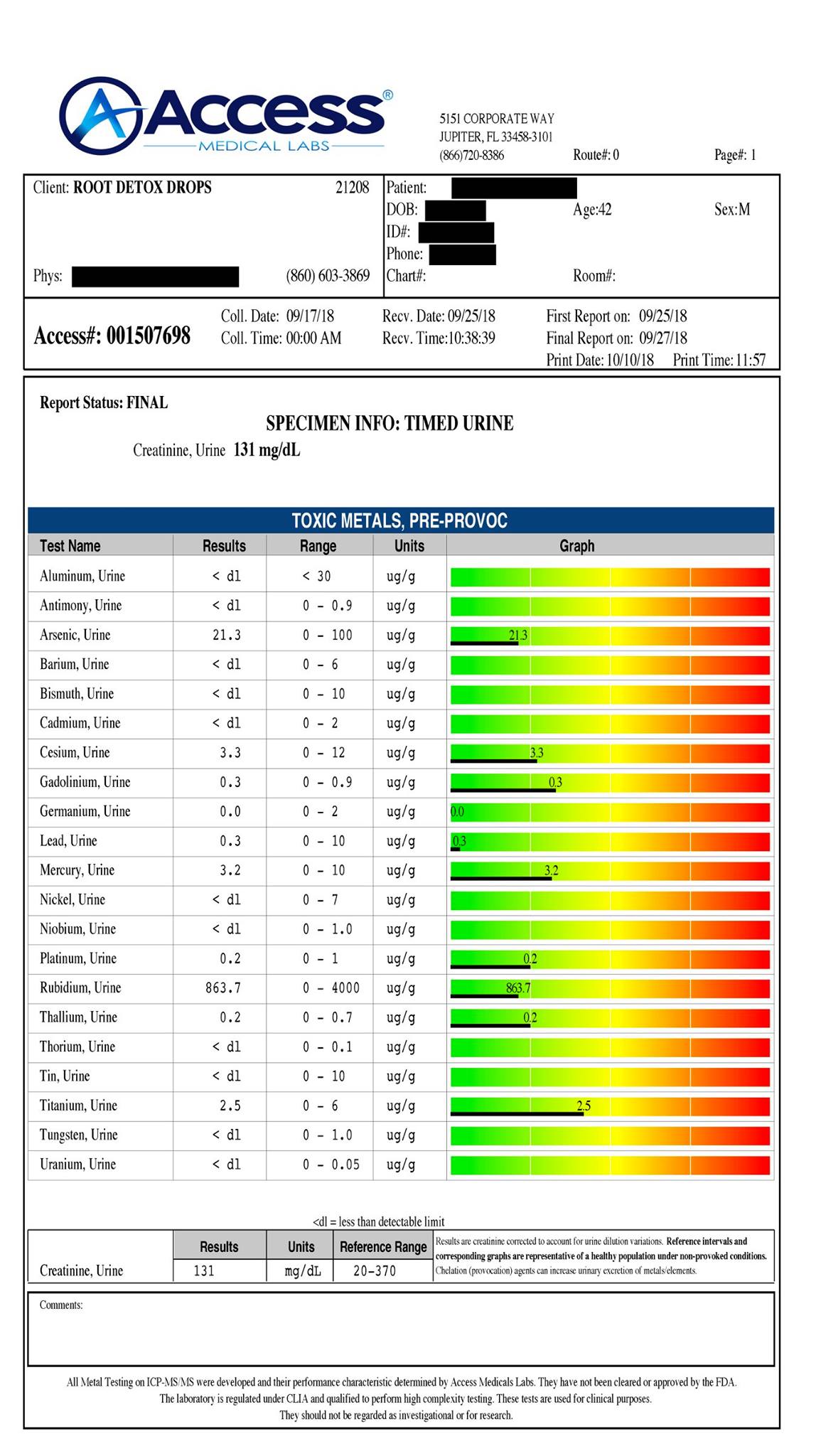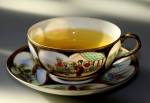Cheddar Cheese Recipe
Cheddar cheese is perhaps the world's most commonly-loved cheese. This
cheese was actually named after the town in England from which it
originated, and Cheddar is classified as a hard, ripened (aged) cheese.
The
Cheddar cheese that we typically think about and see in most stores is
usually orange in colour and has some type of lactic acid bacteria added
to it in order to acidify the milk.
The orange colour comes from anatto, which is an extract derived from the seed pods of a tree from Central America.

Cheddar Cheese Recipe
In addition, rennin (an enzyme which is obtained from the inner lining of a calf's stomach, then sold as rennet) is used so that curds will form in the cheese. You can purchase rennet from a cheese making supply store.
The other special ingredient that you will have to purchase for making Cheddar cheese is mesophilic culture. This direct set culture is the lactic acid-based culture that can be directly added to the milk. A "mesophile" is an organism that will grow best in moderate temperatures, and that is why this type of ingredient is used to make cheese.
Cheddar cheese recipe also requires an ingredient known as liquid calcium chloride. After all of that, the other ingredients will be found in your home quite easily (or, if not, in your local grocery store): cream and/or milk (preferably cow's) and salt. Ensure that the salt is not iodized: use pickling salt, sea salt, or Kosher salt.
This cheddar cheese recipe produces a semi-hard Cheddar that is delicious, especially with fruit or crusty breads. It will store, in the refrigerator, for up to 2 weeks.
Cheddar Cheese Recipe
This cheddar cheese recipe is courtesy of Karen M.
Equipment:
- Thermometer
- stainless steel cheese pot (a 20 quart stockpot with a lid works quite well)
- long-blade carving knife OR 12 inch stainless steel icing spatula
- stainless steel colander
- cheese cloth
- drying mats (some people use Bamboo sushi rolling mats)
- cheese press - You can easily purchase one of these online or at a cheese making supply store. The purpose of the press is to remove any excess whey from the cheese, in order to make it hard. There are even tutorials online, if you wish to make your own press!
Ingredients:
- 2 1/2 gallons freshly pasteurized whole milk
- 2 quarts freshly pasteurized heavy cream
- 2 teaspoons liquid calcium chloride
- 1/4 teaspoon direct set meosphilic culture
- 1/2 rennet tablet
- 4 tablespoons Kosher salt
- 1/2 cup water
Instructions:
In cheese pot, combine milk, cream, and liquid calcium chloride. Stir slowly to prevent mixture from scorching, over medium heat.
Heat until mixture reaches a temperature of 90°F.
Remove pot from heat.
Sprinkle mesophilic culture over top of mixture. Let culture rehydrate for approximately 3 minutes BEFORE you stir it into the milk.
Stir milk, then let mixture rest for approximately 45 minutes. This allows the mixture to ferment.
After 45 minutes, add the rennet, by using an up-and-down motion when stirring, to ensure that the rennet gets evenly distributed throughout the mixture. Mix for about 1 minute.
After another 40 minutes or so, you should see the curds separating from the whey. Use your carving knife (or icing spatula) to cut the curds into smaller pieces. Allow curds to rest for another 5 minutes.
Put pot back onto indirect** heat and heat curds to 100°F, increasing the temperature by no more than 2°F every 5 minutes (therefore, this should take 30 minutes to reach 100°F.
**If you can use a double boiler process here, this would be ideal. Another method would be to fill a sink full of water at 100 - 110°F for this step. Continue to stir.
Keep the curds and whey at 100°F for approximately 1 hour. Stir every 5 minutes. Make sure that the temperature is kept constant at 100°F for the full 1 hour timeframe.
Put the colander without the cheesecloth into the sink and slowly pour the curds and whey into the colander. Drain thoroughly.
After whey has been drained, sprinkle 1 tablespoon of salt over the curds and mix it gently with a stainless steel spoon. Repeat salt profess after 1 minute, and then repeat process once again (a total of 3 times).
Now place curds into a cheesecloth-lined press. Press for approximately 15 minutes using 5 pounds of weight.
Remove cheese from press and remove cheesecloth. Put cloth back into press; then put cheese in again, upside down this time.
Press cheese for 12 hours with 10 pounds of pressure.
Repeat procedure for removal of cheese from press.
Make a brine solution with the 1/2 cup of water and the remaining 1 tablespoon of salt.
Using a portion of the cheesecloth, apply brine gently over the surface of the cheese. DO NOT RUB THE BRINE INTO THE CHEESE!
Place cheese onto the drying mat to air dry for up to 3 days, turning cheese over twice daily.
The cheese is ready to eat when a yellow rind starts to appear, and the cheese is dry to the touch.
Return from Cheddar Cheese Recipe Page to Process of Cheese Making
Return to Mediterranean Diet Home Page
SUBSCRIBE
to Mediterranean Diet Newsletter and get a FREE E-BOOK:
Printable Weekly Diet Meal Plan With Instructions!
Cheese Recipes



